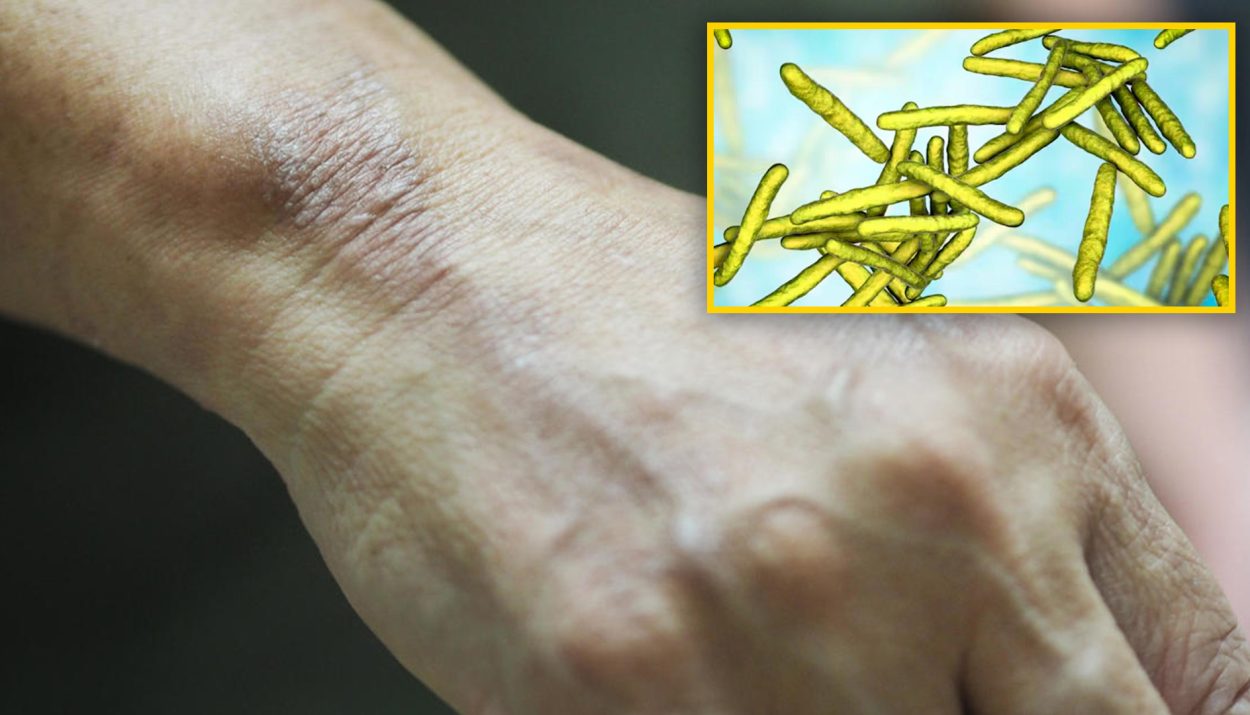When we think of leprosy today, we are reminded of the leper colonies of the past, where unfortunately people afflicted by this disfiguring and contagious disease were sent in an effort to stop the spread.
We no longer have leper colonies, but that doesn’t mean that leprosy has been eradicated. It is a disease that is very much still with us. In fact, a recent uptick in leprosy diagnosis in Florida has health officials worried.
What Is Leprosy?
Leprosy is an infectious disease caused by the Mycobacterium leprae bacteria. People afflicted with leprosy experience skin lesions and nerve damage that can lead to deformities and unsightly disfigurements. It also impacts the patient’s nose, eyes, and upper respiratory system.

It was the potential for disfiguring that made leprosy a scourge of the past. People were so horrified by the sight of leprosy victims that a stigma became attached to the disease. Communities sought to remove leprosy patients from their areas.
Leprosy Is Highly Contagious, Right?
Wrong! The bacteria that cause leprosy spreads from person to person through water droplets. When an infected person coughs or sneezes, the bacteria become suspended in the air where others can breathe it in. However, it takes quite a bit of exposure to the bacteria before a person actually develops leprosy.

The majority of people who have contracted leprosy have been in long-term contact with someone infected with the disease. Most often, this was a family member or a co-worker. In addition, a person can be exposed to leprosy bacteria through contact with wild animals. Remember this fact. We will discuss it more later.
Leprosy in the Bible
Leprosy is mentioned in the Bible’s Old and New Testaments, but that doesn’t mean these were references to the actual disease we now know as leprosy. In biblical times, leprosy was an umbrella term applied to any person with a gross, unsightly skin disease.

The insinuation in the Bible is that people with leprosy represented the lowest members of society. They were unclean, therefore other religious leaders would not touch them. But Jesus proved his legitimacy by not only touching leprosy victims, but by curing them of their horrific disease.
Leprosy Spread Through Medieval Europe
As leprosy spread through Europe during the Middle Ages, it sparked fear. According to some accounts, there were about 19,000 leprosy hospitals in Europe by the year 1200. Leprosy did not discriminate. It could impact the wealthy and powerful just as it could the penniless.

A prime example of this is King Baldwin IV who ruled Jerusalem in the 12th century. He was afflicted by leprosy and was known throughout history as the “Leper King.”
The Rise of Leprosariums
Leprosariums – a fancy name for leper colonies – sprang up as a result of the stigma surrounding this disease. In the 19th century, and even into the early 20th century, leper colonies were established in isolated places, far from society. For example, there was a leprosy colony on one of the Hawaiian Islands.

People sent to leprosy colonies had shelter and basic medical care, but the main purpose was to keep them quarantined so others didn’t catch the dreaded illness. A person with leprosy faced a lifetime of ostracization, loneliness, isolation, and discrimination.
The Decline of Leper Colonies
Leper colonies existed through the middle of the 20th century. As advances in science and medicine gave us a better understanding of the disease and its cause, more effective treatment options were developed.

A dose of antibiotics – rather, a cocktail of a few different antibiotics – and a leprosy patient could return to society and live a productive life.
Is Leprosy a Deadly Disease?
Leprosy, which is also called Hansen’s disease, is a slow-moving disease. It can take many years for an afflicted person to experience outward symptoms of the disease. Although it is disfiguring and can cause permanent nerve damage, it is very rarely fatal.

If leprosy is left untreated or if treatment is delayed, however, it can cause secondary complications that can be life-threatening.
One U.S. State Is Experiencing a Surge in Leprosy Cases
The World Health Organization states that about 200,000 cases of leprosy are reported worldwide each year. Infectious disease experts note that leprosy cases are rising in the southeastern United States.

Florida, in particular, is seeing more and more instances of leprosy. In fact, leprosy diagnoses have doubled in the last decade. More than 80-percent of all leprosy cases in Florida come from the central part of the state.
Florida’s Leprosy Rates
According to professor of Global Health Infection and Immunity, Francisca Mutapi, of the University of Edinburgh, “Florida reported 10 cases of leprosy every year between 2002 and 2014. This rose to 29 new cases in 2015. There were 15 new cases in 2023.”

She continued, “Global case detection rates dropped between 2019 and 2020, but this has been rising since then. The World Health Organization attributes part of the decline in case detection rates to the impact of the SARS-CoV-2 pandemic on health services.”
What Could Be Behind the Rising Numbers?
Professor Mutapi noted, “We currently do not know what is driving the reported increase of leprosy cases in Florida. Studies are currently underway to determine how infections are being transmitted, i.e., between humans versus infections from animals to humans.”

“People may become infected from other people with untreated leprosy or from the nine-banded armadillo, a natural host of the bacteria causing the disease,” she added. Of the 200,000 cases of leprosy reported to the World Health Organization each year, the majority of them can be traced back to contact with armadillos.
Armadillos as Vectors
Leprosy was long thought to be transmitted only from human to human. We now know that the only animal-to-human transmission of the bacteria that causes leprosy comes from armadillos.

According to John Stewart Spencer, a researcher at Colorado State University, “Besides humans, M. leprae is known to infect armadillos, red squirrels in the U.K. and chimpanzees in the West African countries of Guinea Bissau and Ivory Coast.” But only armadillos can pass the disease to humans.
From Armadillos to Soil to Humans?
As Spencer explained, “My collaborator here at CSU, Dr. Charlotte Avanzi, has performed whole genome sequencing on over 200 clinical human isolates from Brazil and has also sequenced isolates from armadillos in Mexico and from the chimpanzees in West Africa.”

He continued, “It is also likely that M. leprae can survive for months or years in the soil and water inside amoeba that could serve as another environmental reservoir infecting humans like the person from Florida.”
Leprosy Is Treatable Today
Today, leprosy is totally treatable using a combination of antibiotics, however early diagnosis and treatment is key to staving off the effects of the disease. It is also important to know that some people are more predisposed to contracting leprosy than others.

Spencer explained, “Genetics plays a key role in susceptibility or resistance, and it has been estimated that over 90 percent of all humans on the planet have a natural immunity to mycobacterial infection, including tuberculosis, leprosy and non-tuberculous mycobacteria (NTM).”






